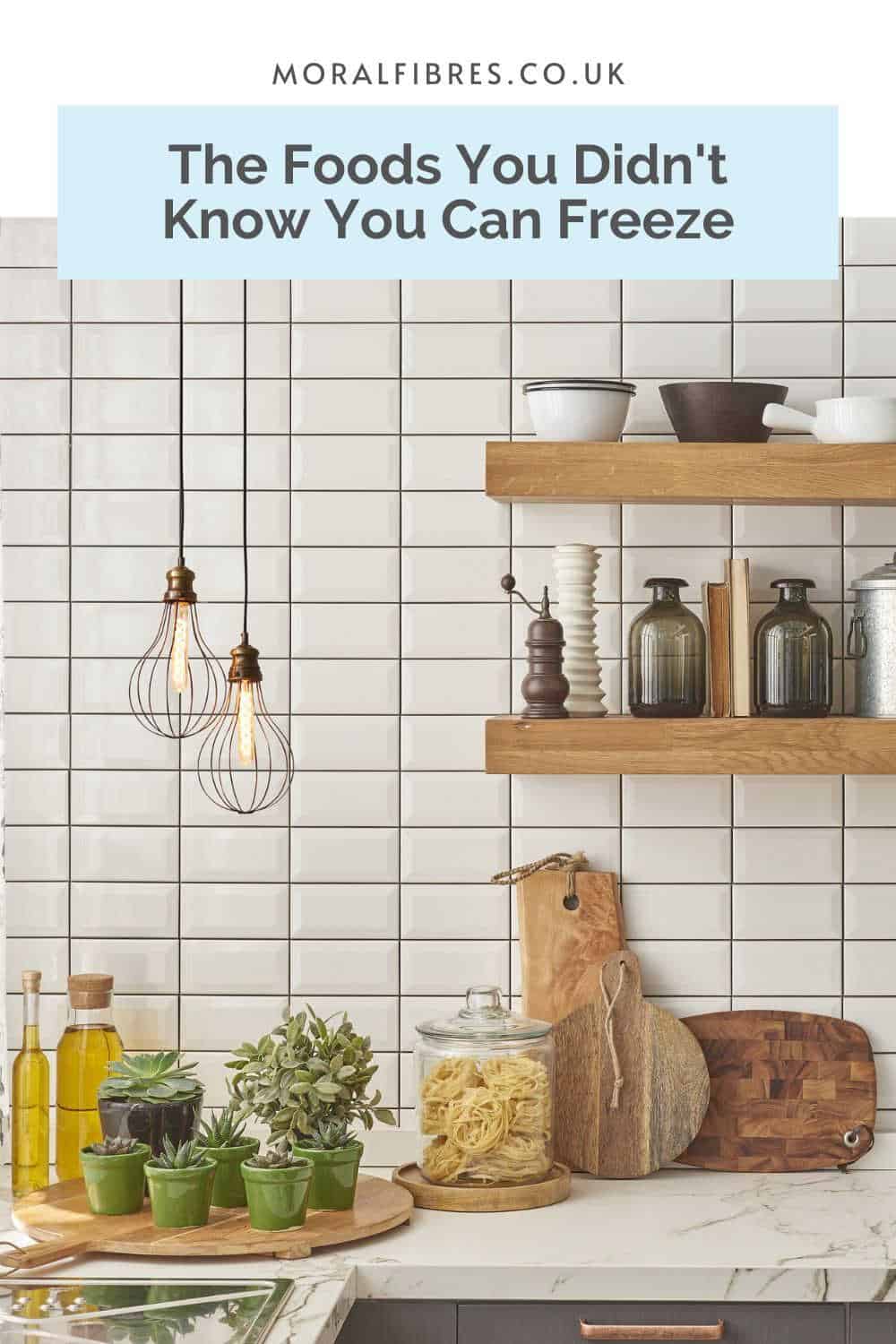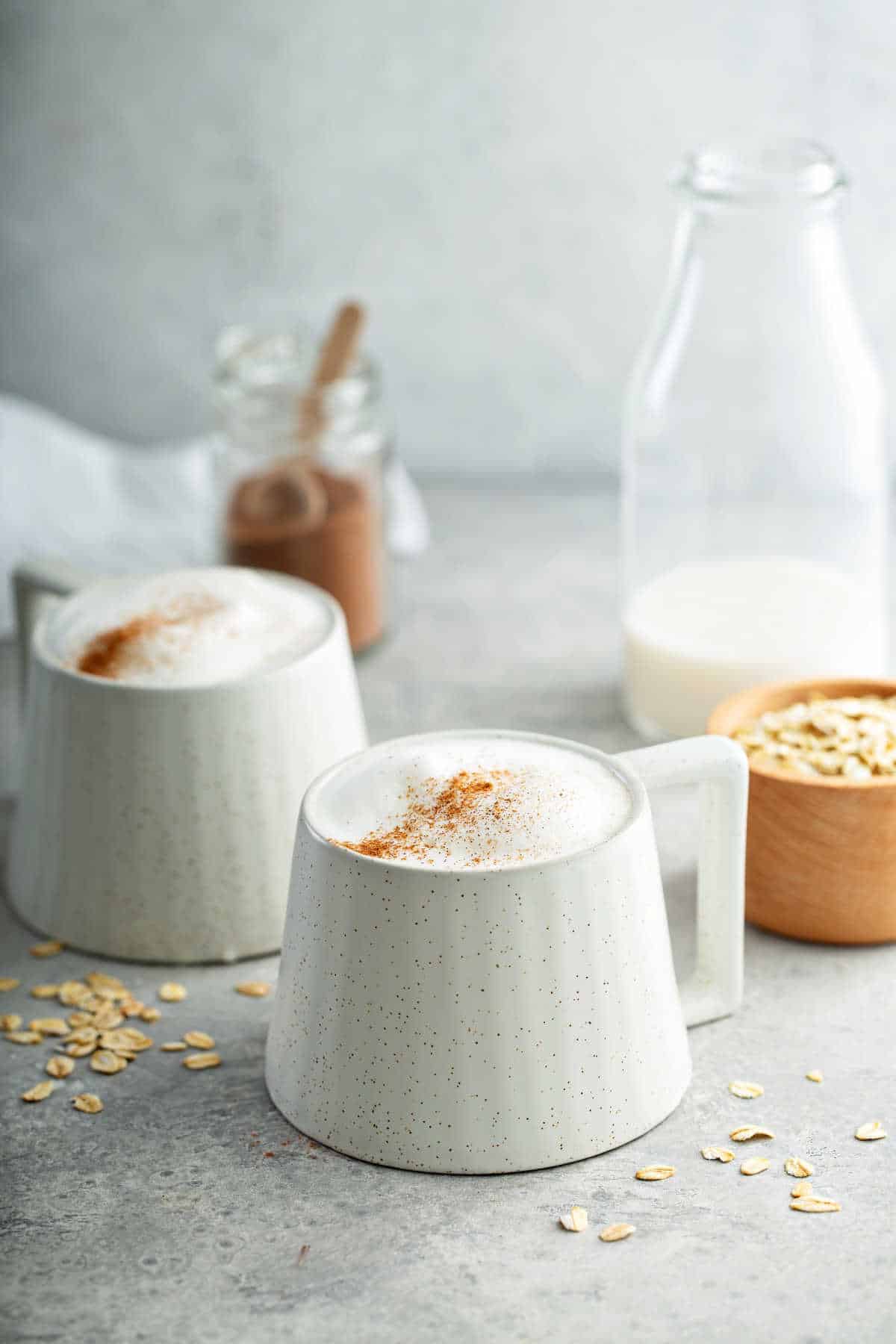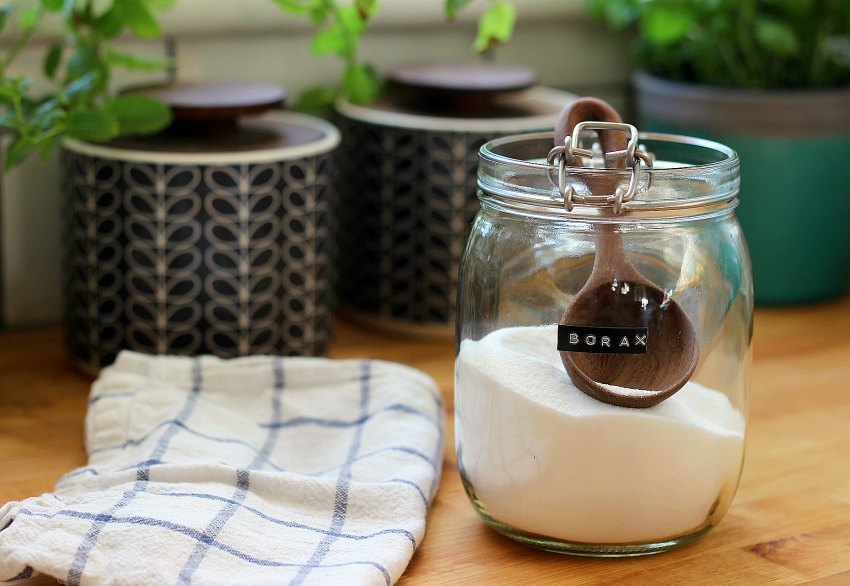20 Foods You Didn’t Know You Can Freeze
To support the running costs of Moral Fibres, this post may contain affiliate links. This means Moral Fibres may earn a small commission, at no extra cost to readers, on items purchased through these links.
Your freezer is a useful tool in helping you to cut food waste and save money. But beyond the usual suspects, there are a host of foods you can freeze that you may not know about. Here are some of my favourite foods to freeze, along with freezing directions to keep you right.
In the UK alone, we produce a staggering 9.5 million tonnes of food waste annually. Globally, a jaw-dropping one-third of all food produced goes to waste every single year.
It may feel insignificant, but food waste is a colossal issue. Our global food systems are accountable for up to one-third of all human-linked greenhouse gas emissions and gulp down a whopping 70% of the water extracted from nature.
What’s more, agriculture has been pinpointed as a threat to over 86% of all animals facing extinction. So, besides the obvious financial benefits of trimming down our food waste, there’s an urgent environmental imperative to cut back on what we toss out.
Your freezer is a key tool in cutting food waste. So beyond freezing the usual suspects, I’ve put together a list of foods you can freeze that you may not know about – from fresh herbs to baked goods and more. To help keep you right, I’ve included some freezing tips to ensure your food stays fresh and safe.
20 Freezer-Friendly Foods

Want to know more about these surprising freezer-friendly foods? Use the quick links to jump to a specific section of this post, or keep scrolling for the full guide.
- Cheese
- Fresh Herbs
- Plant-Based Milk
- Cow’s Milk
- Citrus Fruit
- Bananas
- Eggs
- Cake
- Yoghurt
- Butter
- Double Cream
- Cooked Pasta
- Potatoes
- Bread
- Mushrooms
- Tomatoes
- Wine
- Nuts & Seeds
- Rice
- Tinned Coconut Milk
1. Cheese
If you’re partial to a bit of cheese, then you’ll be pleased to hear that many types of cheese can be safely frozen.
Hard and semi-hard cheeses like cheddar, mozzarella, parmesan, and feta freeze particularly well. However, soft cheeses, such as cottage cheese, blue cheese, camembert and brie don’t freeze so well because of their high water content. These dry out in the freezer, and don’t taste so good. Hard cheeses, on the other hand, contain less water and tolerate the freezing process much better.
To freeze your hard cheese, wrap it in a freezer bag (try my sustainable alternatives to freezer bags) or a beeswax wrap, and freeze for up to three months.
To thaw, place it in the fridge for 24 hours. Once defrosted, cheese is best used for cooking as its texture tends to change during the freezing process. But whether you’re making pizza, nachos or risotto, it’s handy to have some frozen cheese to hand.
Alternatively, you can grate your cheese, and then freeze it flat on a baking tray. Once frozen, decant it into a sealed tub, again, for up to three months. Grated cheese can be added to dishes to cook straight from frozen, making it even more convenient.
2. Fresh Herbs
If you’ve ever bought a bunch of fresh herbs for a recipe only to use a small portion and watch the rest wilt away, then you’ll be over the moon to know that herbs are a great food to freeze.
Simply chop the herbs, place them in ice cube trays, cover with olive oil, and then freeze. Once frozen, transfer the herb cubes to a tub for easy storage for up to six months. You can then use the cubes directly into your cooking to add flavour to soups, stews, and sauces, without any need to defrost them. It’s a great way to cut food waste and save money.
Find out more in my guide to freezing herbs.
3. Plant-Based Milk

Pretty much all plant-based milk can be frozen for later use, however, it can be a difficult one to get right. The trick to its success is in the freezing technique – as its texture does change a little in the freezing process.
Rather than freezing a whole carton – which when defrosted wouldn’t taste so nice in your cereal or tea – I find it’s best to pour the milk into ice-cube trays and freeze the milk until it’s solid. Once frozen, these can be transferred to a freezer-safe container for up to three months. The cubes can then be added directly to soups, sauces and smoothies, without the need to defrost them.
4. Cow’s Milk
Similar to plant-based milk, cow’s milk can also be frozen. Although, like its vegan counterparts, the texture of milk does change during the freezing process. This means it’s best to freeze cow’s milk in an ice-cube tray and then use the cubes directly in your cooking for the best results.
5. Citrus Fruit
Whilst whole citrus fruits don’t freeze so well, if you’re willing to do a bit of prep work, you can freeze almost every part for future use, for up to six months.
I love cutting my leftover citrus fruit into slices for a zero-waste way of adding ice and a slice to a beverage. Freeze these flat on a baking tray before transferring to a tub once frozen solid for best results.
You can also freeze the juice to add to cooking. Simply squeeze your lemons, limes, oranges or grapefruits, and then add the juice to ice cube trays for an easy way to portion it.
Meanwhile, the zest can also be frozen. Simply grate it before freezing, before adding the zest to an ice cube tray with a few drops of lemon juice to keep it from drying out. It’s a great way to add bright flavour to dishes and drinks without the need for fresh citrus on hand.
See my full guide to freezing lemons for all my top tips.
6. Bananas
Bananas might seem like an unusual food to put in the freezer, but they do freeze remarkably well for around three months.
From experience, I find it best to peel bananas before freezing them, as it’s very fiddling trying to peel a frozen banana! Alternatively, slice them into coins, spread the banana slices in a single layer on a baking sheet and freeze until solid. Once frozen, transfer the banana pieces to a container, where they will keep well for around three months.
Frozen bananas are ideal for using directly from frozen in smoothies. For a tasty treat, you can even make vegan banana ice cream, again directly from frozen. Alternatively, you can defrost the banana in the fridge, before immediately using it in your baking.
7. Eggs

If you find yourself with leftover egg whites or yolks after baking, don’t toss them out. It’s a little-known fact that both egg whites and yolks can be frozen for later use.
Egg whites are the easiest to freeze, as they can be frozen as they are. To help with portion control, pour each egg white into separate compartments of an ice cube tray. That way you’ll know for future recipes how many cubes you’ll need. Once solid, they can then be transferred to a tub.
To use in cooking, thaw the cubes in your fridge overnight. Use them straight after thawing in food that you intend to cook or bake – don’t use them in raw food and drink, such as in cocktails.
Egg yolks need a little more work, as they can become gelatinous when frozen. To avoid this from happening, whisk the yolk of each egg with a pinch of salt or sugar. Then freeze each yolk individually in an ice cube tray, as you would with the egg whites.
Like the egg whites, the yolk needs to be thawed overnight in the fridge before using them in your cooking or baking. Again, use them immediately after thawing – don’t leave them hanging around in the fridge – and don’t use the yolk in the food you intend to eat raw.
8. Cake
If you have your cake and can’t eat it, then worry not. Most cakes freeze well, however, it is best to freeze them before they have any icing or filling on them.
After baking, allow your cake to cool and wrap it in an old bread bag or similar, before adding a layer of tin foil (again, recycled tin foil is best). You can then pop this in the freezer for up to three months.
When you are ready for the cake, unwrap it and defrost it at room temperature for a few hours. The cake can then be iced or filled for a taste treat.
9. Yoghurt
Like milk, the consistency of yoghurt does change a little when frozen and then deforested. But that’s not to say that you shouldn’t freeze yoghurt. Any yoghurt, whether it’s plain or fruit-flavoured, or full-fat or non-fat can be successfully frozen.
I like mine poured into lolly moulds for a refreshing summer treat – if you eat the yoghurt frozen you don’t notice the change in texture. Alternatively, you can freeze in ice cube trays to add to smoothies. Just make sure you consume it within two months.
10. Butter
Butter freezes exceptionally well and can be stored for a long time – salted butter can be frozen for up to one year, whilst unsalted butter can be frozen for up to nine months.
To freeze, simply cut the butter into slices, and then wrap the butter tightly in its original packaging. You can then place it in an airtight container. Frozen butter can be grated for use in baking or cooking, or the slices can be defrosted. To defrost the frozen slices of butter, place them in the fridge for 24 hours, before using it up within 3 days of defrosting.
11. Double Cream
While double cream can be frozen, it may separate or become grainy when thawed. To minimise this, whip the cream until stiff peaks form, then spoon it onto a baking sheet lined with parchment paper. Freeze until solid, then transfer the whipped cream dollops to a freezer bag or container. Use frozen whipped cream as a topping for desserts or hot drinks.
I would avoid freezing single cream. Due to its lower fat content, it doesn’t tolerate the freezing process very well and can curdle when defrosted.
12. Cooked Pasta
If you’ve ever cooked too much pasta (it’s easily done!), then the good news is that this doesn’t have to go to waste. Allow the pasta to cool a little, before tossing it with some olive oil to prevent it from sticking together in the freezer. Pop it in an airtight tub, and then freeze it for up to three months.
When you’re ready to cook with the pasta, defrost it in the fridge, and cook immediately.
13. Potatoes
Any cooked or partially cooked potatoes – from mashed to boiled or roasted – can be frozen. Once the potatoes are cooled, just pop them into a tub, and place them in the freezer for up to three months. When you’re ready to cook with them, defrost them in the fridge before cooking immediately.
14. Bread

Bread and baked goods freeze remarkably well. Whether you’ve baked a fresh loaf of bread or can’t get through a whole loaf, freezing it can help prevent your bread from going stale or mouldy.
Shop-bought sliced bread can be frozen in its plastic bag for up to six months. To eat, remove it from the bag, and thaw it at room temperature. It’s important to remove the bread from the bag, as otherwise it traps condensation and makes your bread soggy. Alternatively, you can toast sliced bread directly from the freezer, for a waste-free way to enjoy breakfast.
Whole loaves of bread can also be frozen when cool. Wrap it up tightly in tin foil (preferably recycled tin foil), and store it for up to one month. When you’re ready to eat it, thaw it at room temperature, or reheat it in the oven at around 160°C for 20 minutes or so. For best results, sprinkle a little water on top before placing the loaf in the oven. This helps to keep the inside soft and chewy.
15. Mushrooms
Mushrooms are another food that can be frozen. However, they have a high water content, which means they don’t tolerate the freezing process very well. This means, for results, you should cook them first – I find frying them until brown gives the best results.
Once cooled, pop them in a sealed container, and freeze them for up to three months. These can then be defrosted in the fridge or used directly from frozen in stews, casseroles and sauces.
16. Tomatoes
Whilst freezing whole tomatoes is a big no-no, that doesn’t mean you can’t freeze tomatoes. If you’ve grown or bought too many, you can blitz these up in a blender, before transferring them to a sealed container and freezing it for up to six months.
Defrost the tomato puree in the fridge, and use it to make passata, soup, chutney, soups and more.
17. Wine
If you’ve got a little bit of wine left over after an evening with friends, that you don’t plan on drinking, then don’t pour it down the sink. Did you know that red and white wine can both be frozen for up to three months?
Whilst it’s not so good to drink defrosted wine, it’s ideal for use in your cooking. Whether that’s adding a bit of flavour to a bolognese sauce with some red wine, or adding a splash of white wine to a risotto, frozen wine works really well.
However, I’ve found that wine is a bit tricky to freeze. Because of the alcohol content, the wine will not freeze completely solid – it will stay a little soft. As such, I’ve found it best to freeze wine in an ice cube tray. However, as wine doesn’t completely freeze, it’s best to leave the cubes in the ice-cube tray until you need to use them.
There’s no need to defrost the cubes before use – you can add them directly to the pan. To help you work out how many cubes to add to your pan, as a guide, a standard ice cube is equivalent to 30 ml or 2 tablespoons.
For more ideas on what to do with leftover wine check out my handy guide.
18. Nuts & Seeds
Nuts and seeds contain healthy oils and unsaturated fats that can turn rancid fairly quickly. However, it’s a little-known fact that freezing them can help extend their shelf life. Whether you buy nuts and seeds in bulk or have leftovers from a recipe, freezing them is a smart storage solution. Simply place your nuts and seeds in airtight containers or bags and store them in the freezer to maintain freshness.
Seeds and nuts can be frozen for up to a year, with no significant changes in their taste or texture. This means you can snack on them or add them to your food straight out of the freezer, without any fuss.
19. Rice
I’m always wary about anything to do with storing cooked rice. It feels so easy to get it wrong. However, Love Food Hate Waste says you can freeze rice and I trust their expert opinion.
Love Food Hate Waste says you should cool any rice you want to freeze quickly – preferably by placing it in an air-tight container and putting that into cold water. Once cold, it should then be frozen – ideally within one hour. This can be stored in the freezer for up to three months.
Defrost the rice by popping it in the fridge. Once defrosted it should be used within 24 hours. Here you should reheat it in the oven or microwave until it’s piping hot all the way through. It is very important not to reheat it more than once.
Love Food Hate Waste does not recommend freezing and/or reheating rice bought from a takeaway. This is because it may have been pre-cooked and reheated.
20. Tinned Coconut Milk
Tinned coconut milk is my final freezer-friendly food. It’s so quick and easy to freeze.
If you use canned coconut milk for cooking, and you have enough left over to make one of your favourite dishes that contain coconut milk (mine’s this vegan macaroni cheese) then you can put the leftover milk straight into a tub. This can then go into the freezer for up to three months and be defrosted in the fridge. Once it’s defrosted, the milk should be used immediately.
If you use coconut milk in smaller quantities, then freeze the milk in ice cube trays. You can then add these directly to soups (like this vegan sweet potato, chilli and coconut soup), sauces or smoothies, for an easy and tasty way to reduce your food waste.
See my guide to freezing coconut milk for the full low-down.
Any other top freezing tips? I’m all ears!
Found this post useful? Please consider buying me a virtual coffee to help support the site’s running costs.




